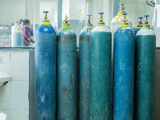(CIDRAP Business Source Osterholm Briefing) – Only 3 months ago, here in the United States and many parts of the Northern Hemisphere we were experiencing the peak case occurrence of the second wave of the novel H1N1 influenza pandemic. Fearful parents were scrambling to find the precious few doses of vaccine available in their communities. Reports of people dying emerged almost daily in every state, and many of the deaths were among young adults and children. Then, practically in a flash, everything changed.
At this moment the world is experiencing one of the lowest levels of influenza activity caused by either pandemic or seasonal influenza viruses ever documented in the Northern Hemisphere in mid January. Wow, what a difference a few weeks can make.
The change is so startling, in fact, that some people have gone so far as to suggest that the first pandemic of the 21st century was fabricated by the World Health Organization (WHO) to sell certain pharmaceutical companies' vaccine. The Parliamentary Assembly of the Council of Europe plans to debate the theme "Faked pandemics: a threat to health" at a plenary session in Strasbourg, France, next week.
What happened? Were we fooled by predictions of a "severe storm" only to have it not materialize? Or did we, in fact, just come through a bad storm? Could we be sitting in the eye of a hurricane, unaware that the winds are about to whip up again? Or did something like a summer thunderstorm just pass? In the swirl of such questions, can you offer your organization any solid message? Let me try to put my "pandemic weather hat" on and share a perspective.
Then . . .
First, some context. Remember the chaos of the early days of the emerging pandemic in late April and early May? The first reports from Mexico suggested that the illness caused by the newly found novel H1N1 was severe for many people and marked the potential beginning of a very dangerous period for humankind. Spread of this new virus to countries around the world occurred with the same speed of jet planes. By late May, the influenza scientific community had little doubt that we were witnessing the next influenza pandemic. But as more people became sick around the world, the clinical picture diverged from the initial one seen in Mexico. It was evident that most people infected with H1N1 were experiencing a more seasonal-like form of influenza.
Despite the changing clinical picture, the rapidly rising case numbers in many countries from around the world—and solid evidence that the novel virus differed markedly from the circulating H1N1 seasonal influenza strain—fully justified the WHO's declaration on Jun 11 that the world was experiencing the first influenza pandemic of the 21st century. Efforts today by some politicians or other skeptics to declare this situation anything other than a pandemic are simply examples of "flat earth" thinking.
And as I shared in my previous Osterholm Briefing, even if there is no third wave associated with this pandemic, the propensity for this novel H1N1 virus to cause such severe disease and death in a significant number of younger adults and children means its overall impact on the world's population (ie, total years of potential life lost before age 75) places it among the serious public health disasters of recent years. True, it has been far from a 1918-like pandemic to date, and we can be incredibly grateful that it wasn't.
. . . and now
So now that we have what appears to be a very large number of unused H1N1 vaccine doses sitting in government stockpiles around the world, we're hearing other critics suggest that governments overreacted when they made such large vaccine purchases. I have one word for such accusations: irresponsible.
Just imagine if governments of the world had not acted decisively last May to procure a larger number of doses of a life-saving vaccine—and one that takes 6 to 8 months to manufacture and deliver—and we ended up having a 1918-like pandemic. The masses would have called for the heads of any government or public health leaders (those who hadn't died from H1N1) who had failed to act aggressively in procuring and distributing such vaccine.
I believe any responsible person would rather answer for why they took the risk to protect people rather than to gamble with the potential of large-scale human disaster, as we saw with hurricane Katrina.
And finally, as I also noted in my previous column, the final obituary for this pandemic has not been written. While the second wave of the novel H1N1 pandemic has clearly passed and seasonal influenza activity is following a pattern seen after the three pandemics of the 20th century when it virtually disappeared, I wouldn't bet against a third pandemic wave over the next several months. An estimated half of the world's population remains vulnerable to H1N1 infection; they have not been infected or vaccinated and have no residual immunity from infection with a similar H1N1 virus from more than 60 years ago. As an epidemiologist, I can tell you that we're looking at more than sufficient fuel for another "pandemic forest fire" to race across the world.
Time will tell.
Bottom line for organizations
In the meantime, here's the message for you and your organizations: Continue to push all of your colleagues and their family members to get vaccinated. Don't wait to find out if there will be a third wave. Data from millions of persons vaccinated show that this vaccine is extremely safe, and it's available for many in the developed world.
I'd like to think that we're watching the rainbows on the backside of a "pandemic thunderstorm," but we can't count on it, because we're just as likely sitting in the eye of the hurricane. Unfortunately we don't have pandemic radar that gives us that answer. So we have to rely on common sense and reason, rather than wasting our time on conjecture and irresponsible blame. And we do have an effective vaccine that protects us should that hurricane scenario be right. Use it.



















